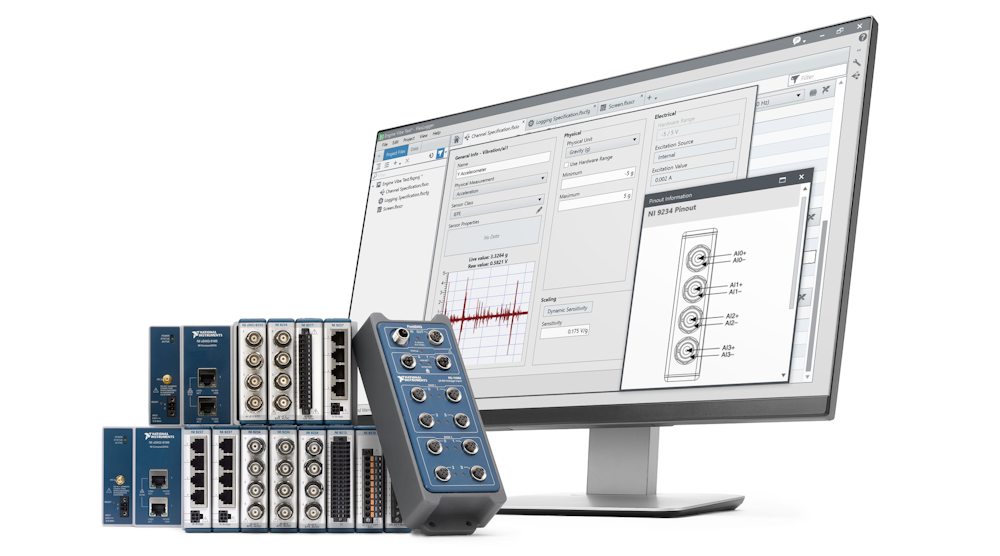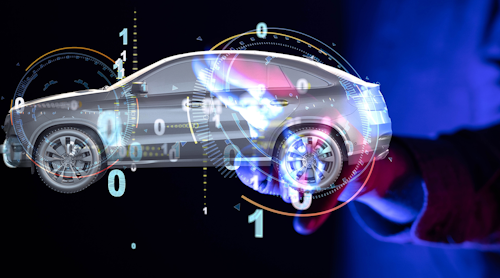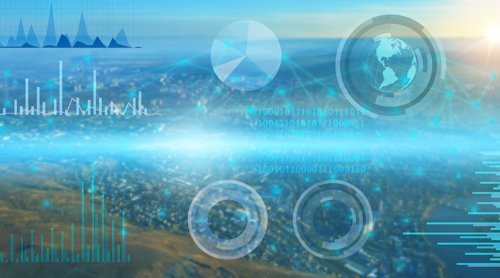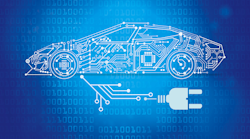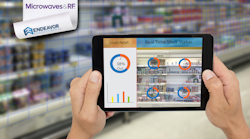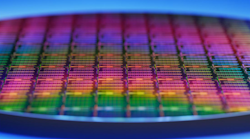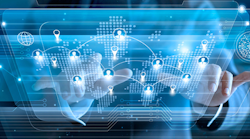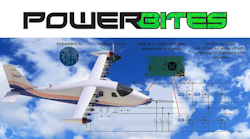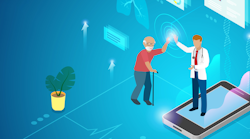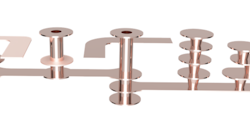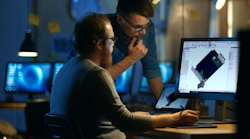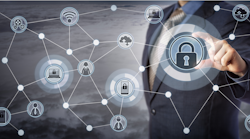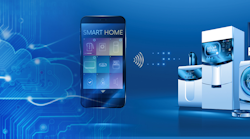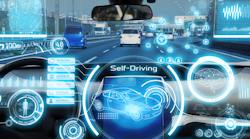Reprinted with permission fromEvaluation Engineering
The new paradigm of design is one driven by software. This ranges from the design and simulation software used to flesh out ideas, to the process and QC software used during manufacturing, all the way out into the field today with over-the-air software updates in intelligent systems. The new functionalities, efficiencies, and reliability provided by the latest software-driven solutions available is changing the very face of society.
For example, NI recently released Engineering Hope, their 2030 Corporate Impact Strategy, outlining the company’s vision and aspirational goals for making a measurable, positive impact on society and the environment by 2030. Over the next decade, NI is dedicated to creating impact in three areas by working toward a set of 15 goals and commitments, including two “moonshot” diversity goals.
 We looked up Omid Sojoodi, NI’s VP of R&D and Application Software, where he helps lead the continued advancement and development of NI application software, including LabVIEW, and asked him some questions about what he thinks of the state of the industry and where the next generation of software development may lead us.
We looked up Omid Sojoodi, NI’s VP of R&D and Application Software, where he helps lead the continued advancement and development of NI application software, including LabVIEW, and asked him some questions about what he thinks of the state of the industry and where the next generation of software development may lead us.
EE: Now, let’s start with NI. We talked with NI last year about the company’s identity migration from National Instruments to NI, and about how it was more than just symbolic. How much do you feel that it represents a paradigm shift from looking at test, measurement, and evaluation as a task to it all as a continuous process, from a specific link in the chain to an overarching philosophy. What do you think about that?
Omid Sojoodi: That's interesting. One of the things that we've been talking about is the role of test and test data in developing products, and really speeding time to market. One of the ideas that we're putting out there, and you may have heard our CEO Eric Starkloff talk about this, is the unique value of test data, giving you insights into the products that you're developing throughout its entire life cycle, and really harnessing the value of test data to speed time to market, and improve the products that you're developing.
That really was the philosophy behind, or one of the reasons behind the motivation for acquiring OptimalPlus for us. As you know, we've had investments in SystemLink, where we are looking at the operations of the tester, but really we wanted to get beyond that, and really looking at the end product that the customer is developing, and really building the processes around that, so that you can effectively use test data as a really valuable part of your product development as well. So I don't know if that maybe answers your question or gives you our thoughts on that.
EE: Well, it definitely answers a part of it, because it's become such a multifaceted thing. That's one of the facets. That whole aspect of big data, which small as it were, because it's big data, but it's addressing that application, that device, that product, but it's also reflecting the whole aspect of product awareness from the design table, and the software simulation to being out in the field. You're getting telemetry from that product in the field to support warranty, or software updates or things of that nature.
It's almost as if with a new product today, from the time it's being designed to the time it stopped being covered in the field, we now are in an environment where we're going to receive continuous telemetry from that device forevermore.
Omid Sojoodi: Yeah, and that's fascinating. You know, I was doing some personal reading on this. I saw a really interesting article talking about this idea of big data, and putting it in the context of technological evolutions that we as humanity experience.
所以they talk about sort of three classes of technological evolutions. One is around technologies that really mediate relationships between people. So things like money or the internet, it's fundamentally about how people interact. Then they talked about technological innovations that are really around harnessing forces of nature, like fire or electricity. Interestingly, they put data in a third category, which I think dovetails nicely to what you were saying.
这第三类,他们讨论技术revolutions that change the way humans perceive the world. So think the microscope or the telescope. So when you take big data, and then you couple that with techniques like machine learning and AI, they say that fundamentally gives you a new way to perceive things. In this case, we're talking about new ways to perceive the product that you're developing, all the way from design, to production, to in the field. It's really giving you a new view of about the product. And I think that's a really interesting idea about big data and AI, and what it could mean.
Solution Fusion
EE: That's why the philosophy on test is changing, because it's not like you need less test, or it's not like you don't need an oscilloscope, but in the new paradigm, it's not like software simulation is going to replace everything. It's just, these are all tools now that have built upon one another to the point now where that simulation set, that parameter set that is established in design, is now being designed in and built in, and tested to Six Sigma on the factory floor, and then is continuously monitored in the field. We're not taking snapshots anymore. This is a continuous live stream of the lifetime of that product.
Omid Sojoodi: Yeah, exactly. And that's really exciting, and that's an area that we've been investing in, and we want to continue investing in, is really breaking down those silos, so that continuous data stream that you're talking about is available throughout the entire life cycle of the product. One area that we've been looking at obviously is as devices get more complex is related to big data, and what our customers are seeing, is devices are getting more and more complex. The amount of data and test data that you can generate from a device is becoming so large.
现实地讲,云可能是only place you're going to be able to store and process that data. So that's something that we're seeing, is just the explosion of the amount of data that needs to be processed. And of course, before you can even process it, you have to cleanse it and label it and do all that. Oftentimes, customers come to us and say, "Hey, we want to do something with this data." They want to talk about AI or ML, and the first thing is, "Well, do you even know where all your data is? Is it in a format that's even amenable for you to start thinking about processing it?" So mundane things like that. So that's something that we are seeing
EE: They may not even be thinking about the nature of the sensor that delivered that data. We're focusing a lot on the software aspect of it, but the software aspect has to acknowledge that the data came from an analog hardware situation, reality as it were, so that means also that these companies have to not just start thinking about all this data, but where did the data come from? How did they have their sensors integrated? Is the data trustworthy because of the nature of the collection?
Omid Sojoodi:没错。你说的很对。所以that's something that we're seeing, is huge amounts of data. Then the other thing, this is an exciting area for us, is how do you test these complex devices? How do you manage really the explosion of the test space? So we've been doing some preliminary work around, can we use techniques like big data and ML, to look at the parameters that you normally would use to test the device, and just pick a subset to test, knowing that that subset is going to give you the same results as doing the full parameter set suite. So that's an area that's exciting for us, and our customers are obviously really interested in. So it's a different way of speeding up tests, and just throwing more CPU at it frankly.
EE: Now as a software guy, you're probably very familiar with software bloat and mission creep. As you were talking about it can only be processed in the cloud, and it's going to need machine learning, is it because they're overenthusiastically diving into the big data? Is there such a thing as too much data in an application?
Omid Sojoodi: There is certainly as the devices get more complex, I think the data is exploding also. I think a big challenge is whether it's in our space or really any space, we now just have access to so much data, that it's really not just about the data, but it's how do you make sense of the data, and what's relevant and what's not? And that's a real challenge that I think everyone's going to be dealing with.
Migrating Forward
EE: So at that point having said that, let's say I come to you hat in hand, I'm a client, let's say I'm already using LabVIEW. I'm already a client of yours, but I understand I could do more, right? At the present time all I'm doing is I'm using LabVIEW, maybe I'm doing it a little bit collaboratively with some of my guys and gals now that they're stuck at home with COVID, but I want to ramp my game up. What would you advise me to do to move into more of an Industry 4.0 philosophy, than just using design software at the beginning?
Omid Sojoodi: Well, I think there are a couple of options just building on an engineer's experience with LabVIEW. One of the products that we introduced a couple of years ago, and we're continuing to invest in, is the Web Module for LabVIEW, which allows you to use your existing knowledge of LabVIEW, and that programming paradigm to create dashboards that run inside the browser.
So to your point about COVID and working remotely, obviously that's raised everybody's interest in how do I get access to systems remotely when I don't have to physically be there. I think taking advantage of something like the Web Module, and reusing those skills that you already have as a LabVIEW developer to build remote interfaces to your test system, would be one way to raise your game and increase the value of those skills, and bring them really into the browser.
That would be one thing, but I think beyond that, moving beyond just an individual engineer and a tester, and taking advantage of the capabilities of SystemLink, to really manage a whole fleet of testers, and provision those remotely, make sure that they're calibrated and really monitor them, I think is the next step. Just tying it back to the Web Module, even in SystemLink, you can use the LabVIEW Web Module to create custom dashboards that integrate with SystemLink. So really you're moving beyond an individual engineer, and a tester to a whole fleet of testers for the enterprise.
EE: Now what happens then when we start talking about the product in the field? How do I migrate my tool set to accommodate that kind of a situation, where I hear people doing cool stuff like, over-the-air updates and software management and all. What do I need to know? What kind of tools do I require to up my game in that aspect, and take my data process and move it into the field?
Omid Sojoodi: Yeah, that's interesting. I mean, many of the same technologies and techniques that we're using to update say software on a tester, probably apply also to a product in the field, but of course depending on the product, some of the basic techniques are going to be the same, but depending on the end product, it really matters how much additional software can you run on that end product.
但这就是我认为这一趋势研究e seen and will continue to see going forward, is just the explosion of open-source technologies that are available both to us, and our customers that you can use to build on. Large parts of SystemLink, large parts of the OptimalPlus platform that we acquired, are built on a standard open-source projects that are available to our customers too. So we've been able to exploit those projects. In many cases, we've made additions that we've contributed back to the open-source community. But those technologies are available to our end customers too, so that would be something that I would want to look at. If I was a customer, then I wanted to get this in field data updates.
The other advantage of us using open-source to build our products, is it fundamentally makes them more open to, and so customers can modify and extend our products more easily. But back to your question, how do you take advantage of it? I think it ultimately depends on the product that you have, and what its capabilities are. So I think that would have to be more of a consultation.
EE: All right then. Let's see, I think we've gotten enough for a nice little piece here to get people to think about it as a concept. Do you have any final words or some advice or a tip for our audience before we let you go?
Omid Sojoodi: Yeah. I think back to what we were talking about in terms of big data and AI. My background Alix, I actually got my master's degree in artificial intelligence a long time ago, and I'm just amazed at where we are in terms of AI and ML.
And as we were talking before, fundamentally it all comes down to data. And again, some of those mundane aspects of, do you have access to all your data? Is it tagged? Is it labeled? Is it cleansed so that you can use it? You really need to get that done first before you can take advantage of some of these more advanced techniques. It's pretty mundane work, but really critical. So that would be my advice, is if you're interested in taking advantage of some of these cool technologies, that's the first step. Getting access to all your data and getting it cleansed and ready to be processed.

